People are getting hurt using multimeters. That is a fact. Every day, electrical inspectors and investigators potentially expose themselves to some sort of risk while doing inspections and investigations. Eliminating or limiting risk is the key to accident prevention while doing the job. NFPA 921, chapter 12 is devoted to the safety of the investigator, and knowledge is an important part of reducing exposure to investigative related injuries. Of particular note are sections 12.2.3 through 12.2.4.3, which go into great detail on electrical safety issues and techniques.
In addition to protecting the public’s interest with respect to the safety of electrical installations, electrical inspections can also play an important role in advising and educating the electrical trade about electrical safety hazards they may face on the job.
Since the change in the 2002 Ontario Electrical Safety Code, requiring the mandatory reporting of electrical accidents to the Electrical Safety Authority of Ontario (ESA), we have been able to do in-depth investigations from a root cause perspective, focusing specifically on the electrical factors.
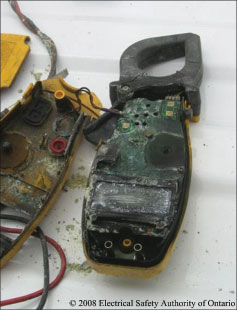
Photo 1. Multimeter accident where the “settings” were changed while energized.
During these investigations, a trend involving multimeter accidents emerged and alarmingly revealed that approximately 80 per cent of the reported multimeter accidents resulted in critical injuries to the victim. In fact, as I am writing this article, yet another multimeter accident has come across my desk, with it, three more injured workers, one of them critically. These numbers are alarming, totally unacceptable and sadly, preventable
In fact, I cannot think of another single piece of electrical equipment that has as high a rate of injury to the worker. Something must be done, and ESA is taking the initiative. A recent survey ESA conducted with 5,000 electricians from across the province of Ontario revealed that 11 per cent of respondents had experienced a “violent failure of a multimeter.” This number is staggering and certainly unacceptable.
Why do people tolerate such a high failure rate? Can you think of any other electrical product which causes such violent explosions when the people using them make common, predictable errors? So why do we tolerate such a high failure rate on this product, especially when there is a simple and effective solution at hand?
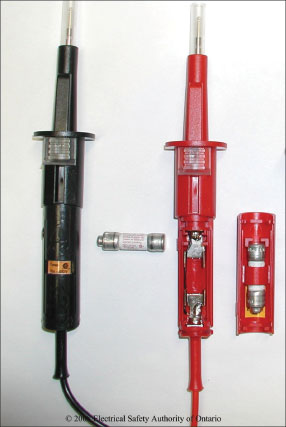
Photo 2. Example of approved fused leads with “rejection” type, HRC fuses
I would speculate that if we were to re-examine some of the serious arc-flash accidents of the past, with a root cause perspective, we would likely find multimeters played a role in a number of them. To this end, we then started to look further back at other accidents and other jurisdictions and found “meter failure” was listed as the cause in many others. However, why the meter failed, is the real question.
User Errors
Our cause and determination analysis of these accidents pointed to user error, in the majority of cases, as the source problem followed closely by internal component failure.
User errors would include:
- Wrong settings (i.e., ohms scale selected when testing voltage)
- Wrong “CAT” area application
- Wrong probe socket used (i.e., amps instead of volts)
- Wrong use of the product, such as switching settings under power
- Wrong voltage applied, exceeding limits of meter.
Adding to the user error problem is wear, tear and contamination within the meter that creates internal component failures or compromises the components’ dielectric properties. Still other causes concluded that because of complicated markings on the meter, many users have no idea what a “CAT” rating is, let alone the fact that using a CAT II meter in a CAT III area can lead to their catastrophic failure. At the risk of being over simplistic, CAT ratings on a meter indicate the maximum voltage a meter can be used in a “geographic” area of the electrical system, regardless of the proper selector setting—a very difficult undertaking to ascertain by the end user.
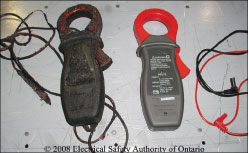
Photo 3. Accident involving two workers. Victim 1 held probes, while Victim 2 changed settings
Closer examination of the devices involved in these accidents indicated that many of these products did not have traditional internal protection; and even with most that did, the protection did not appear to prevent the introduction of a fault into the system, resulting in serious injury to the user from arc flash. It is a fact that most meters rely on some sort of impedance protection for user input errors on the voltage / continuity settings, even the ones with internal fuses. I challenge you to look at any meter and verify that even if there is an internal fuse, the fuse protects the voltage or continuity part of the circuit. I think you will find that most do not.
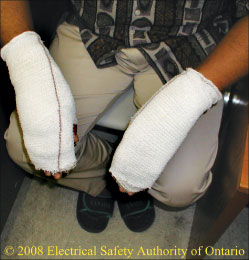
Photo 4. Victim 2 from photo 3 accident, Victim 1 suffered critical injuries
In most cases, it appears that although the initial fault itself did not cause the injury to the user, the meter had introduced the fault directly into the system being tested. As a result, a dead short was initiated right at the test probes’ ends. This is the equivalent of putting a coat hanger right across the terminals being tested, with the victim standing within a foot or so of the failure point.
With typical fault currents in industrial applications well over 10,000 amps, and the resultant arc-flash temperature of up to 35,000 degrees Fahrenheit, it is not hard to see why there are so many critical injuries associated with these accidents.
Next, we assessed the standard governing multimeters (in Canada it is CSA/C22.2 No. 61010) and found that it did not appear to adequately address many of these specific issues. This is not totally unusual since it is field experience that drives a lot of standard changes. That is why codes and standards are constantly being updated by experience gained in the field.
The biggest challenge before ESA was to determine ways of preventing or reducing such tragic accidents from continuing to happen.
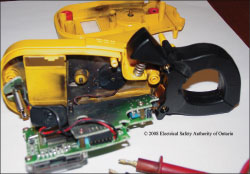
Photo 5. Multimeter accident involving three injuries, one critical, as a result of wrong CAT area
From the user error perspective, the fact that these tools are used for investigations or for troubleshooting live equipment may be one of the biggest problems. The reality is that there are too many distracters involved with the job at hand, and all it takes is for the user to forget to change the setting or stray into a different “CAT” area and they are at significant risk.
Also, because of the condition of the building being inspected or investigated, it is possible that back feeds from emergency generators may be involved or the user might accidentally get into the wrong circuit. It is not uncommon to find voltage on wiring while checking for the continuity of a circuit. The reality is that there are many distracters, including concentrating on cause / determination scenarios while test metering the installation and the user can easily forget to switch the meter to the proper function and thereby accidentally initiate an internal failure. This dead short is then propagated up to the system test point, the probes, with tragic results. It goes without saying that arc-flash protection per the NFPA 70E is essential.
Another suspected failure cause is associated with aging equipment. When a multmeter has been in service for many years, it can begin to deteriorate or to become compromised with contamination of dirt or moisture, conductive material or the deterioration of its dielectric properties. A construction site or fire investigation scene is rarely a friendly environment so remember to protect your test equipment during an inspection or investigation and properly clean it after each use.
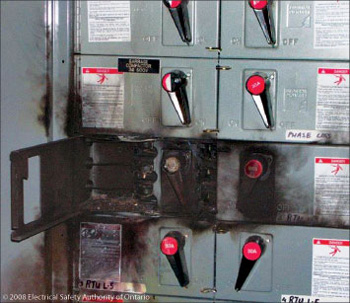
Photo 6. Victim suffered 2nd and 3rd degree burns from waist up as a result of having probes in wrong slot of meter
Frequent transient spikes are another leading cause of meter failure and unfortunately the user has no idea when a spike has, or will, hit the meter or worse yet, how many spikes the meter has been subjected to over its lifetime. So how does the user know what is going on inside the instrument? They usually don’t, therefore it is important to have adequate, automatic protection for when things go horribly wrong.
From driving with worn tires and hitting an unexpected icy road, we have learned that seat belts and air bags can save lives when user error or mechanical failures happen. I ask you then, why do we not have the equivalent of seat belts and air bags with our multimeters? We see seat belts and air bags as safety devices for human error. So why should it be acceptable to critically injure workers because they made a simple human error?
Again, this is unacceptable. When the electrical trade put their faith and reliance on a product and an approvals mark, there should be an expectation that they will not end up in the hospital. There is an expectation that protection within the test equipment will take the necessary steps to mitigate a problem when something goes wrong. A basic concept in the electrical code is to protect a device at the point for which it receives its energy, so why don’t we apply that analogy to multimeters’ protection. I ask you then, can something be done?
The Answer Is Simple – Use Fused Leads with all Multimeters
It is clear that we must do a better job of protecting the worker from life-threatening arc faults initiated by failures within a multimeter, whatever the cause was.
We need to create a so-called safety net that would better protect the operator of a multimeter from failures within the meter regardless of why they happen. We can try to determine all the reasons why a multimeter can fail and build specific performance criteria tests in an attempt to prevent that type of fault within the meter from happening. This could include x number of hits from transient spikes. But how many are enough? Should we assume that a ten-year-old meter would take a hit each time it is used? Should we assume it would be used every working day of its life? I can assure you that no such test is practical and would be difficult to be agreed upon. What about impedance protection? The fact is most multimeters rely on this method of protection, but what happens when contaminants or aging short out internal devices? I ask you, would it not be simpler and safer to assume a fault will eventually happen and take the necessary measures that will prevent the fault from entering the system being tested, all the while keeping the protective device as close to the source of energy as possible? The fuse lead approach seems to universally cover more scenarios, and it would appear to also address failures that have not been anticipated on the “test blackboard.”
So What Are Our Options?
Here is what the Electrical Safety Authority believes needs to be done:
- Prove that fused leads work
- Work with the standard committee to improve the standard for multimeters
- Ensure that fused lead products are available by partnering with industry
- Educate the electrical industry about fused leads through education and promoting behavioral changes at the user level. This can be done by:
— Direct mail campaign exchange program to 4000 licensed electrical contractors in Ontario offering them a free set of fused leads,
— Educate the electrical apprentices through the college trade school - Seek tougher government regulation to improve safety that requires the use of fused leads through new fines for employers who do not ensure their employees use fused leads.
The good news is that in Ontario, ESA has initiated all of these options, simultaneously.
Fused leads seem like the most viable option. In fact, the Electrical & Utilities Safety Association of Ontario has had safety rules and a fused lead policy in place for some time now, with good success. According to utility managers, utility workers are not experiencing the same types of multimeter failures or injuries any longer.

Photo 7.
However, before we endorsed the use of fused leads, we believed that they needed to be tested to see if they truly would protect the user from any or all of the five most common user errors, including other internal failures regardless of the cause.
To this end, ESA contracted a high voltage, high current laboratory to test the effectiveness of fused leads in handling internal meter failures.
The resultant testing indicated that when properly applied, fused leads prove to be an effective method in preventing at least four of the five most common user error scenarios and most other internal failures. The only scenario the fused leads could not protect the user from was an extreme overvoltage condition. This was due to the voltage limitations of the fuse itself.
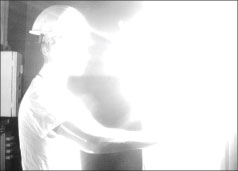
Photo 8. (copyright 2008 Electrical Safety Authority of Ontario)
At the same time, an initiative was put in place to update the CSA Part II Standard, based on these laboratory findings. This is presently ongoing but while there might be agreement with the facts that people are getting hurt with multimeters, getting consensus on the best approach to correct the problem represents a challenge. Since the standard change will take time and will at best, affect only new products built after the adoption of the new standard, something still has to be done to address the thousands of multimeters in use in the field every day. Therefore, the next logical step is to seek stakeholder support for the “mandatory use of approved fused leads on all construction and industrial sites in the province of Ontario.” I believe that then others will follow.

Photo 9. (copyright 2008 Electrical Safety Authority of Ontario)
These initiatives are keys to the reduction of accidents involving multimeters and the protection of the worker. With expected stakeholder support, we have begun an aggressive education program, which will reach out to all the electrical trades in Ontario.
Certainly, the lab testing we did seems to back this up. We could not create a single catastrophic failure on any meter we tested when equipped with properly rated fused leads.
Combined with our awareness campaign, we hope to reduce significantly the number of accidents involving multimeters, making it a safer place to work, while building added confidence in the electrical safety system of Ontario. We hope other jurisdictions will follow suit.
To this end, I challenge you to look at your local jurisdiction’s accident investigations where meters were involved and try to determine why the meter failed; and I think you will agree, something must be done. In Ontario, the Ministry of Labour has certainly helped our cause by recently fining a company $50,000 for a meter failure accident that resulted in a serious injury. I ask you then, putting aside all of the other points for a moment, can you afford to take a chance using a multimeter without fused leads?
I must admit though that I am very frustrated because I continuously hear from contractors that say certain meter manufacturers told them that they do not need to sell fused leads because their product is safe and, in fact, they don’t recommend fused leads because they aren’t convinced that fused test leads will not compromise their current safety ratings.
So perhaps we should ask those same multimeter manufacturers who do not include fused leads with their product how far they are willing to stand behind their product, or better yet, How about asking meter manufacturers to stand in front of their product, right where you are.
But don’t wait for these changes to take effect, take charge of your own safety, now.
The electrical inspector and investigator have to be very careful not to become an additional casualty or statistic. As leaders in the electrical industry, we as inspectors need to share our knowledge and promote fused leads to the people we deal with.
Never use a multimeter without fused leads—your safety may depend on it.
Remember to fuse it or lose it!










Find Us on Socials